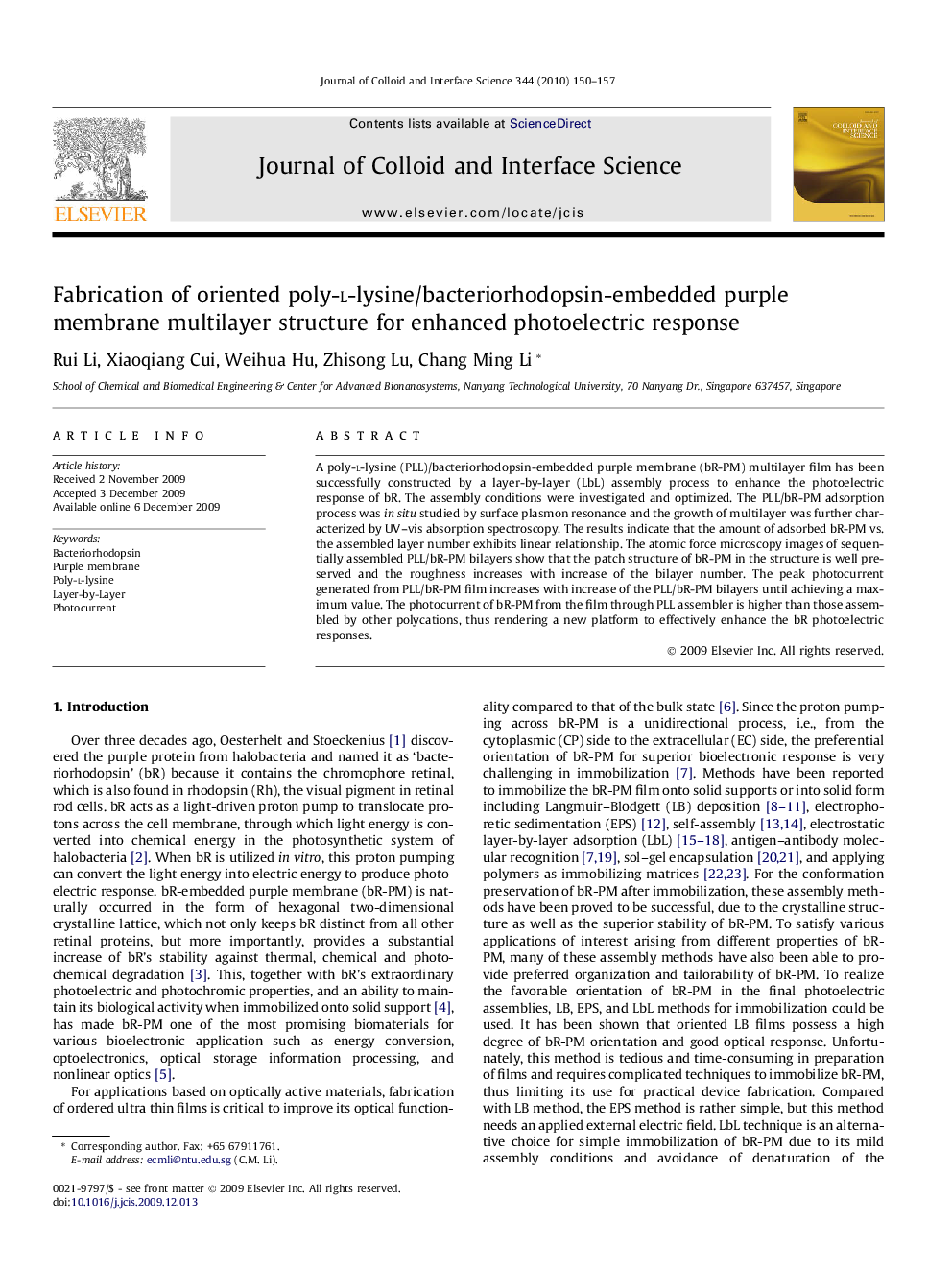| Article ID | Journal | Published Year | Pages | File Type |
|---|---|---|---|---|
| 610235 | Journal of Colloid and Interface Science | 2010 | 8 Pages |
A poly-l-lysine (PLL)/bacteriorhodopsin-embedded purple membrane (bR-PM) multilayer film has been successfully constructed by a layer-by-layer (LbL) assembly process to enhance the photoelectric response of bR. The assembly conditions were investigated and optimized. The PLL/bR-PM adsorption process was in situ studied by surface plasmon resonance and the growth of multilayer was further characterized by UV–vis absorption spectroscopy. The results indicate that the amount of adsorbed bR-PM vs. the assembled layer number exhibits linear relationship. The atomic force microscopy images of sequentially assembled PLL/bR-PM bilayers show that the patch structure of bR-PM in the structure is well preserved and the roughness increases with increase of the bilayer number. The peak photocurrent generated from PLL/bR-PM film increases with increase of the PLL/bR-PM bilayers until achieving a maximum value. The photocurrent of bR-PM from the film through PLL assembler is higher than those assembled by other polycations, thus rendering a new platform to effectively enhance the bR photoelectric responses.
Graphical abstractAs it is schematic shown on the left, an oriented poly-l-lysine/bacteriorhodopsin-embedded purple membrane multilayer structure is constructed and an enhanced photoelectric performance is obtained as shown on the right.Figure optionsDownload full-size imageDownload high-quality image (72 K)Download as PowerPoint slide
